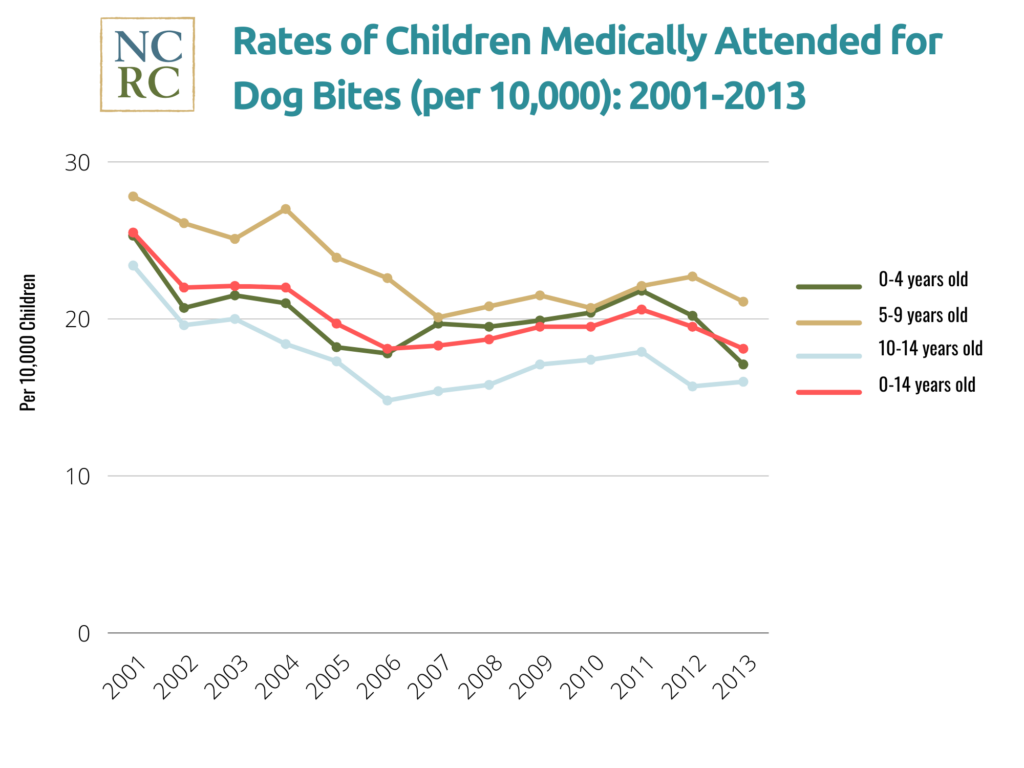
To produce comparisons such as those above, and graphics such as the chart on rates of bites to children, we use the Center for Disease Control’s Web-based Injury Statistics Query and Reporting System (WISQARS)[8] for dog bites and other injury modalities and the Consumer Product Safety Commission[9] for product related injuries, both of which use the National Electronic Injury Surveillance System (NEISS). This provides the most reliable data because NEISS:
For comprehensive review of the literature surrounding growling, snarling, snapping, and biting behavior (incidence and correlates) please see National Canine Research Council’s complete analysis here